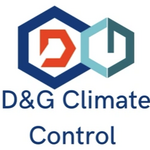@heacol In which case what model Mitsubishi unit would you recommend to pair with a Mitsubishi Ultra Quiet Ecodan 11.2L ASHP and Tempest 250L HW cylinder?
I have to wonder why an experienced company (JL Phillips) would recommend as they have.
Retrofitted 11.2kw Mitsubishi Ecodan to new radiators commissioned November 2021.
14 x 500w Monocrystalline solar panels.
2 ESS Smile G3 10.1 batteries.
ESS Smile G3 5kw inverter.
@morgan As I have stated, Mitsubishi's own wireless internal thermostat. I am not surprised at the thermostat they have recommended, we see them all the time (and put them in the bin). It appears that they are boiler installers, not purely heat pump installers, Boilers and heat pump are completely different, like cars and motorcycles.
Hi Morgan,
Let me explain what Heacol is saying in layman terms.
As stated, a thermostat is an on - off device, which most people may think gives accurate control of temperature. This is not correct for the following reasons.
Thermostats have a built in deadband, which on most thermostats appears to be set at 1C, which may not seem much but can have quite an effect on how a heating system performs. Say a thermostat is set at 20C, and the temperature in the room is at 20C, and the thermostat is off. If the setting is now increased to 21C, the thermostat will switch on and the central heating pump and ASHP will start. As warm water flows from the ASHP, the heat energy will be transported to the heat emitter (say radiator), which will fairly quickly warm up to the temperature of the water. If the ASHP is set to provide water at 40C, then within maybe 5 to 10 minutes the cool water from the radiator will have flowed back to the ASHP and been heated up to 40C. So after probably 10 minutes the water flowing around the system will be at 40C, but the temperature in the room will have barely changed.
Air is quite a good thermal insulator, so it could take an hour or more for the heat energy to transfer from the radiator to the air in the room, during which time the central heating pump and ASHP will continue to operate. When the air temperature reaches 21C, the thermostat will switch off and the pump and ASHP will stop. Because the radiator is still at 40C, it will continue to heat the air in the room and will take the temperature in the room above 21C.
As the radiator cools, a point will be reached where it is no longer heating the air, and the air temperature will start to fall due to heat losses. This will continue until the air temperature falls to 20C at which point the thermostat will once more switch on and start the heating system. Because it takes time for the heat energy to be transferred from the radiator to the air, the air temperature in the room will actually fall below 20C before it starts to warm.
Personally, I am at a loss to understand why thermostat manufacturers insist on incorporating a deadband of 1C or even higher in some cases, which is no longer necessary with modern electronic thermostats. I can feel a change in temperature of 0.5C, and I suspect probably many other people can also do so. If a person is comfortable at 20C, then it is necessary to set the thermostat at 21C to maintain the temperature at around 20C or above.
What Heacol is suggesting is to use the thermistor, which is built into the FTC controller, or even better a remote thermistor which can be mounted in the most appropriate location.
A thermistor is a temperature sensor, which varies its resistance with variation in temperature, and hence can be used to measure the actual changes in temperature. This temperature measurement is used by the FTC controller to adjust the water flow temperature produced by the ASHP.
If, in the above example, a FTC controller with a thermistor is used in place of a thermostat, the following will occur.
If the setpoint on the FTC controller is raised from 20C to 21C, the controller will instruct the ASHP to slightly raise the water flow temperature, but probably not as high as 40C. If after a period of time the controller does not detect an increase in air temperature, it will raise the desired water flow temperature a little more. Once the controller detects that the air temperature is starting to increase it will stop increasing the water flow temperature. If the air temperature now starts to reach the desired 21C, the controller will start to lower the water flow temperature. Over time the controller will therefore balance the heat output from the ASHP to match the heat losses at the desired indoor air temperature. If the desired air temperature is 20C, then the FTC controller should maintain this temperature fairly accurately, with the minimum required water flow temperature and hence most efficient operation of the ASHP.
Without carrying out detailed tests, using both methods of control, it is difficult to quantify exactly how much efficiency improvement can be achieved.
Morgan, if you required any further clarification then please get in touch.
I've just found a whole section on heat pumps for Nest thermostats - quite interesting!
Hi Batalto,
I think you will find this is aimed at the North American market, hence the Fahrenheit temperature and dollar costs. They get much lower temperatures than the UK (when I was working in Montreal it often hit -20C), and hence the need for auxiliary heating (read direct electric) to help out an ASHP. I suspect it would be of marginal benefit in the UK, and could possibly increase consumption and costs if the ASHP is working harder during the coldest part of the night.
@heacol and @derek m. Thank you both. In a quandary now. Do I tell the installer I don’t want the Neostat and insist he fits as you describe? Or do I take the installation as is and buy, instal and do the set up as you describe post instal? Is it easy enough for somebody such as myself to achieve?
Retrofitted 11.2kw Mitsubishi Ecodan to new radiators commissioned November 2021.
14 x 500w Monocrystalline solar panels.
2 ESS Smile G3 10.1 batteries.
ESS Smile G3 5kw inverter.
@morgan Personally I would tell him to install the proper equipment, the Neostat is about half the price, you may have to fork up another £100.00 but it will be worth it.
Hi Morgan,
You can google and download the following, and see if you understand the concept and the equipment.
I may be wrong, but I suspect your supplier understands thermostats, but not wireless remote controllers and how to configure them.
If you or he gets stuck, just ask.
@heacol which one? Is the wireless bit for it to talk to already installed in the Mitsubishi ASHP? To be honest I’m lost and out of my depth here. But I do know I cannot do another winter without central heating.
Retrofitted 11.2kw Mitsubishi Ecodan to new radiators commissioned November 2021.
14 x 500w Monocrystalline solar panels.
2 ESS Smile G3 10.1 batteries.
ESS Smile G3 5kw inverter.
@morgan The Mitsubishi wireless thermostat is a 2 part system, it is an add-on to the FTC5 controller. It communicates with data to the main controller ant tells it exactly what the room temperature is and what the required room temperature is in Degree C.
The Neostst is a wireless on-off switch, just like a light switch. It does not communicate any information to the heat pump controller other than switching it on or off. It is like trying to control the speed of your car with the key.
They do however look similar, but they are not. If you want a good job, do it properly or do not expect it to work properly. Mitsubishi would not have made the thermostat if they intended you to use a third party thermostat. Just tell them you want the Mitsubishi thermostat.
Hi Morgan,
If you google the following and download. Then look at diagram 3.1 on page 5, which shows how the equipment needs to be connected.
Ecodan_FTC5_-_PAC-IF062B-E__PAC-SIF051B-E_Installation_Manual_Instruction_Book__BH79D449H03_.pdf
Your installer should know how to install and configure the equipment.
It may pay you to ask why they have specified a neostat in preference to the Mitsubishi controller.
- 26 Forums
- 2,356 Topics
- 53.4 K Posts
- 361 Online
- 6,017 Members
Join Us!
Worth Watching
Latest Posts
-
RE: Setback savings - fact or fiction?
@cathoderay yes I am familiar with SQL. Interesting num...
By RobS , 19 minutes ago
-

Parsnip, Bacon & Coconut Milk Soup
First let me say, I am only a cook because I am human a...
By Toodles , 37 minutes ago
-

RE: Controlling Daikin Altherma via P1P2 and Home Assistant
@weoleyric Oh Dear, I don’t think I am going to be of m...
By Toodles , 58 minutes ago
-
RE: Octopus Cosy Heat Pump Owners & Discussion Thread
@kevh It's something I'm trialling at the moment - I've...
By AndrewJ , 2 hours ago
-
RE: Electricity price predictions
Ben Watts posted on LinkedIn that he had updated this w...
By Judith , 6 hours ago
-

RE: The good, the bad and the not that great – my heat pump installation
Small update, Emailed and Spoke to Midea UK and they ...
By Burtis , 7 hours ago
-
RE: Solis S6-EH1P8K-L-PLUS – Why I Chose It and What I’ve Learned So Far
@bash Octopus does charge for the admin. The process al...
By Batpred , 7 hours ago
-
RE: External pipework insulation
@transparent HI all The products you mention are ver...
By David Smith , 7 hours ago
-
RE: New Fogstar 15.5kWh upright solution
Issues still under investigation by Solis... Fogstar ...
By Batpred , 7 hours ago
-
RE: Who's your electricity provider and what's your tariff?
I agree, the consumer is not being properly represented...
By Batpred , 7 hours ago
-
RE: Advice on internal circulation pump noise
Thanks @mikefl - I'll maybe have a look at the lock-shi...
By jtg , 24 hours ago
-

RE: Heat Pump Heats the House… But It’s Not Cosy. Emitter Changes or System Tweak?
@toodles interesting suggestion, thanks. I will try to...
By GrahamF , 1 day ago
-
RE: Mitsubishi Ecodan Auto Adaption trial to stop cycling.
The interval you talk of, i think, will be 60min for an...
By F1p , 1 day ago
-
Agree with @majordennisbloodnok on the setbacks. We hav...
By ChandyKris , 2 days ago
-

RE: Speedcomfort radiator fans
@deltona the way the links were added broke the page. A...
By Mars , 2 days ago
-

RE: Refrigerant R32, is it now banned in the EU from 1st Jan 2027 for monobloc ASHPs?
This has been delayed from what I believe to be this ye...
By dgclimatecontrol , 2 days ago
-
RE: Are We Sleepwalking Into Another Race to the Bottom?
this is why I provided current flow temperatures in the...
By ksim , 2 days ago
-

RE: Why Millions of UK Homes Struggle With Heat Pumps
There's many homes that would be quite a disruption for...
By dgclimatecontrol , 2 days ago
-
RE: Ecodan unable to hit legionella target temp - what's the consensus?
@rhh2348 ...maybe this option is what you want? Alter...
By benson , 2 days ago





